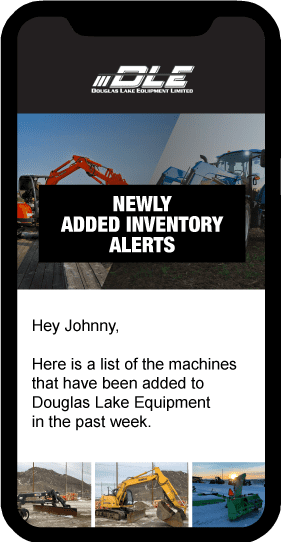Three most underrated items to consider when evaluating excavators

Excavators, both big and small, aren’t overly complex machines. At its core, they’re meant to dig or move material. However, that doesn’t mean there aren’t nuances to each machine and when looking to purchase an excavator, there definitely are some details you don’t want to overlook.
Typically, when shopping for excavators, we start by looking at breakout force and size of the excavator. These quick metrics help us determine if the machine will be powerful enough to actually do the job we need. Many people stop there and just start negotiations.
However, there are many more things you should consider when looking for an excavator that lie just below the surface:
Engine Make
Many excavator manufacturers do not make their own engines. For example, the Kobelco Excavators we have at Douglas Lake Equipment use Hino Engines. This is important because if and when your machine needs to be fixed or serviced, you want your parts to be easily available no matter where you are.
Hino is the industrial subsidiary Toyota and its engines are used in many industrial machines. As a result, Hino will sometimes share parts (like filters) across MANY other pieces of heavy equipment. This makes Hino engine parts widely available, accessible and cost-effective.
Contrast this to some brands like Volvo which have a Scania engine (which is still a great engine) that are manufactured in Europe but have limited supply and availability in smaller rural towns.
Remember it’s not JUST the cost of the repair and parts, but the time it takes for parts to arrive. Every day you’re waiting for a part is a day your excavator is not making money for you and that downtime becomes expensive fast.
Tail Swing
Especially important where space is tight and you have lots of activity around the excavator is forestry and urban construction. Finding an excavator that doesn’t overhang can be the difference between doing a job easily and being a danger to those around you.
Tail swing doesn’t always increase based on the size of the machine. Some 230 size machines have smaller tail swings than their 210 sized brothers. This means you don’t have to sacrifice power for agility and size.
Smoothness and consistency of the Hydraulics
This one is tricky as all hydraulics SHOULD be smooth when new. It’s when you put on a few hundred hours that the hydraulics can become a bit more jittery. The best way to see what your hydraulics will feel like in the future is to test a new machine along with a pre-owned machine of the same type.
We’ve found that some brands’ hydraulic systems will vary dramatically upon use. This means that different operators will have to “relearn” a machine every time they get into a new one – even if it’s the same year, make and model. This difference can cause reduced work output and, potentially, accidents.
Contrast that to some Kobelcos we have in our lot, where we’ve found to be just as smooth when in a pre-owned condition as compared to when they’re new.
 | Scott is a Customer Account Manager at Douglas Lake Equipment. Scott has been in the industry for over 25 years and has equipment experience in farming, construction, forestry, and forklifts. |

